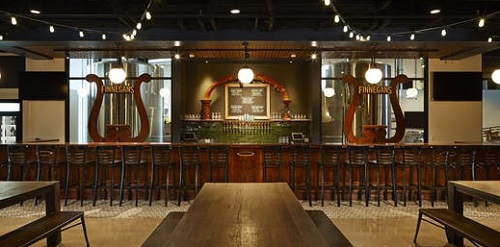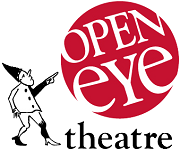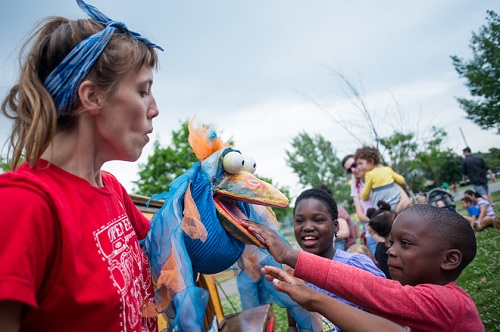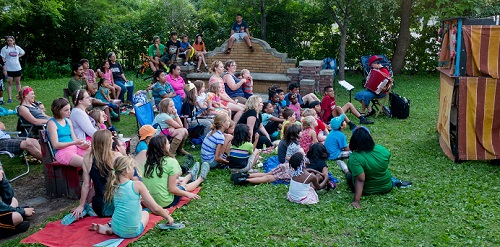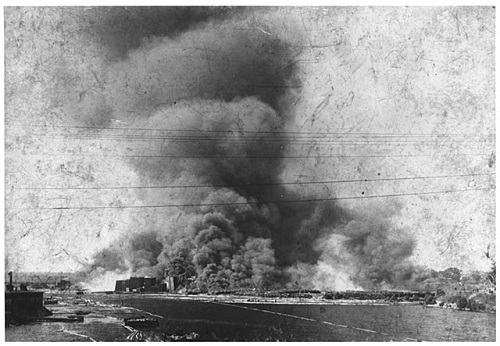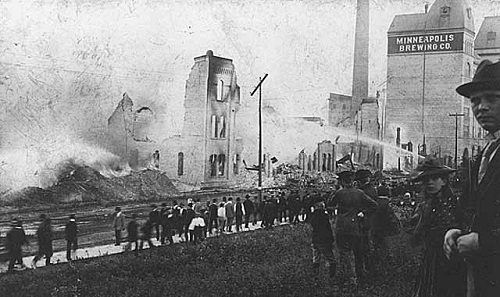Gentleman Forager Launches EATS: A Wildly Unique Outdoor Kitchen Catering Service
 Monday, April 26, 2021 at 4:14PM |
Monday, April 26, 2021 at 4:14PM |  Kim Eslinger |
Kim Eslinger | Via an April 26 News Release:

Gentleman Forager is pleased to announce its new catering service aimed at accommodating large events. Gentleman Forager EATS is a new crave-worthy outdoor kitchen run by veteran Twin Cities Chef Taylor O’Brien, and an impressive multitude of weekly guest chef pop-ups. The ever-changing menu—from mouth watering meats and vegetarian shawarma to morel mushrooms on a stick—is all expertly prepared using wild and wildly delicious ingredients.
 Mike Kempenich“Running a kitchen, especially a workspace as complicated as a pop-up outdoor grill, is incredibly hard. There are so many additional tasks and a mountain of challenges that a chef must overcome,” said Gentleman Forager President Mike Kempenich. “And that’s exactly why we hired Chef Taylor. The guy is confident, creative and extremely dedicated to his craft. He is hardworking with an upbeat vibe, and we are excited to have him command this ship.”
Mike Kempenich“Running a kitchen, especially a workspace as complicated as a pop-up outdoor grill, is incredibly hard. There are so many additional tasks and a mountain of challenges that a chef must overcome,” said Gentleman Forager President Mike Kempenich. “And that’s exactly why we hired Chef Taylor. The guy is confident, creative and extremely dedicated to his craft. He is hardworking with an upbeat vibe, and we are excited to have him command this ship.”
“I am humbled and thankful about starting this new chapter in my culinary escapades,” said O’Brien. “The style of the kitchen, the freedom of the menu, the outdoor environment, the challenging non-traditional equipment, the unique foods—all of it—Is very exciting.”
O’Brien has many years of experience in the culinary arts working for iconic restaurants such as Manny’s Steakhouse, Barbette, Butcher and the Boar, The Sample Room, Oxcart Alehouse and more. Along his journey, he has picked up a lot of knowledge, so much that he has created a journal containing more than 400 delectable, lip-smacking, satisfying recipes. O’Brien is now eager to deliver his food creations to hungry crowds via Gentleman Forager EATS. Such recipes could include: Porcini Crusted Filet Mignon, a premium steak cut rolled in a kosher salt, cracked pepper and porcini mushroom spice blend; Morels on a Stick, professionally skewered morel mushrooms grilled tender; and much more.
“I love being a chef because excellent food makes people happy and comfortable. Big smiles from blissful guests intoxicates me with feelings of contentment I've never experienced elsewhere.” said Taylor. “This is going to be a lot of fun. Wild ingredients breed wild ideas to meld into my recipes. The delicious food we dish out is sure to impress. Please come check us out, we’d love to serve you.”

Gentleman Forager EATS will debut its new catering service at Hook & Ladder Theater’s 2021 urban outdoors summer concert series called Under The Canopy. The outdoor kitchen will cater every concert in the series. The food stand will be easily and conveniently accessible for those looking for a full meal, appetizer or snack while attending any of the shows which will run weekends from May 1st through early October in downtown Minneapolis. Learn more at: www.thehookmpls.com.
ABOUT GENTLEMAN FORAGER
For more than a decade, Gentleman Forager (GF) has been building a recognized, and respected brand in the wild food industry. Their mission is to revolutionize the way mushrooms, and other wild foods, are integrated into consumers' lifestyles. Foraging for wild mushrooms in remote forests, as well as cultivating exotic, specialty mushrooms is how the business got its start. The company also focuses on guiding wild mushroom-hunt outings and teaching wild mushroom identification courses. GF often collaborates with food-industry businesses to develop delicious creations and menu items using wild and wildly unique ingredients. They enjoy endorsing fun and interesting people, places, things and activities by creating and sharing engaging articles, videos and social media content. Hosting fun events, running an outdoor catering service, and selling their unique products and services with a smile is what they do.
Mike Kempenich—also known as “The Gentleman Forager”—is the company owner and President. He is an exotic mushroom cultivator, forager, instructor and wild foods distributor from Minneapolis Minnesota, sometimes described as a leader in the locavore dining, wild foraging, and vertical urban-farming movements. Kempenich is also the founder and Chief Marketing Officer of a retail company called Forest To Fork, which specializes in specialty mushroom cultivation and retail sales of mushrooms and other wild food products. His companies are dedicated to propagating top-quality specialty products; delivering excellent customer service; practicing sustainable and organic production techniques; and supporting commercial foragers, farmers and cultivators. Learn more at: www.gentlemanforager.com and www.forest-fork.com.

